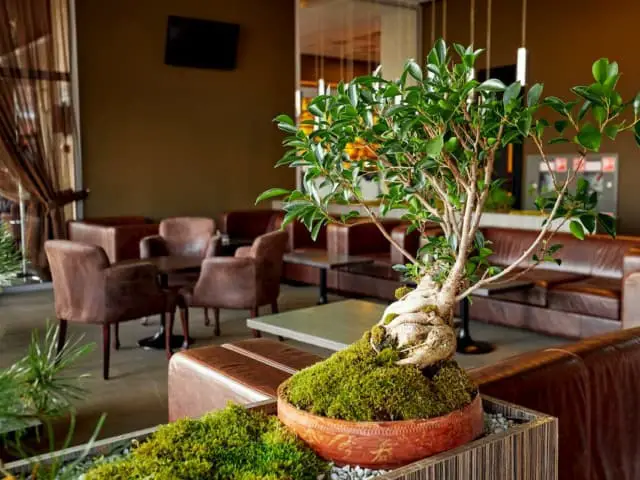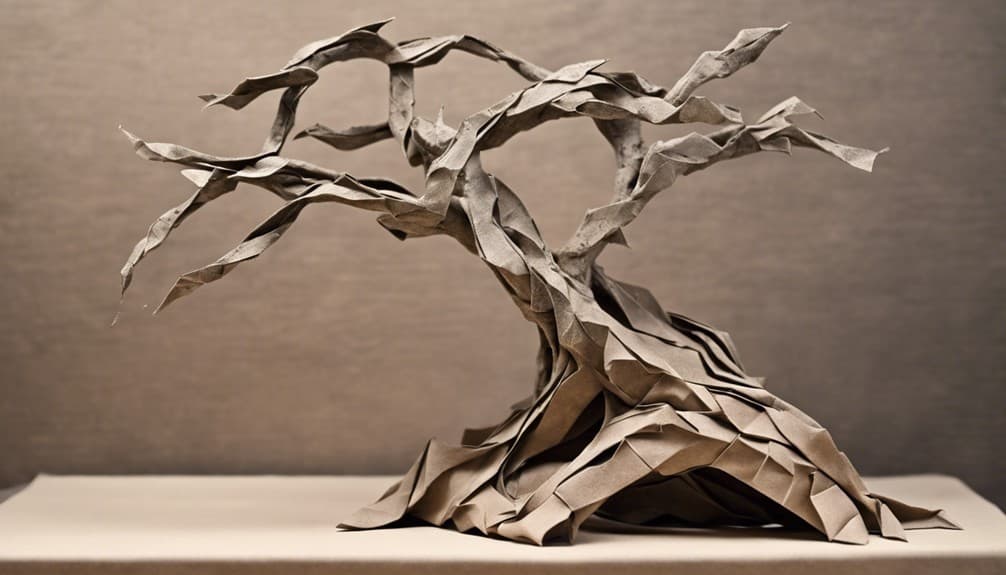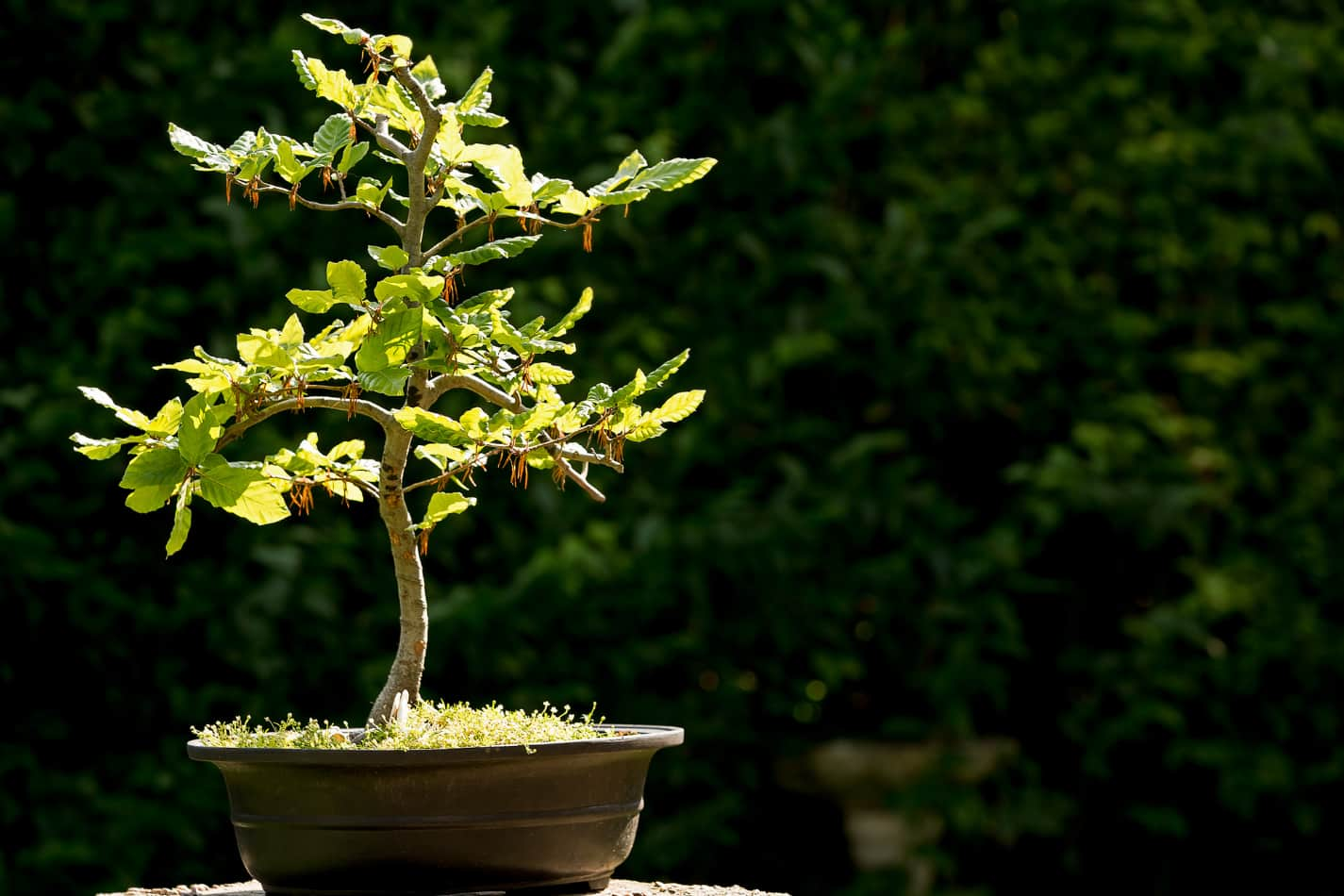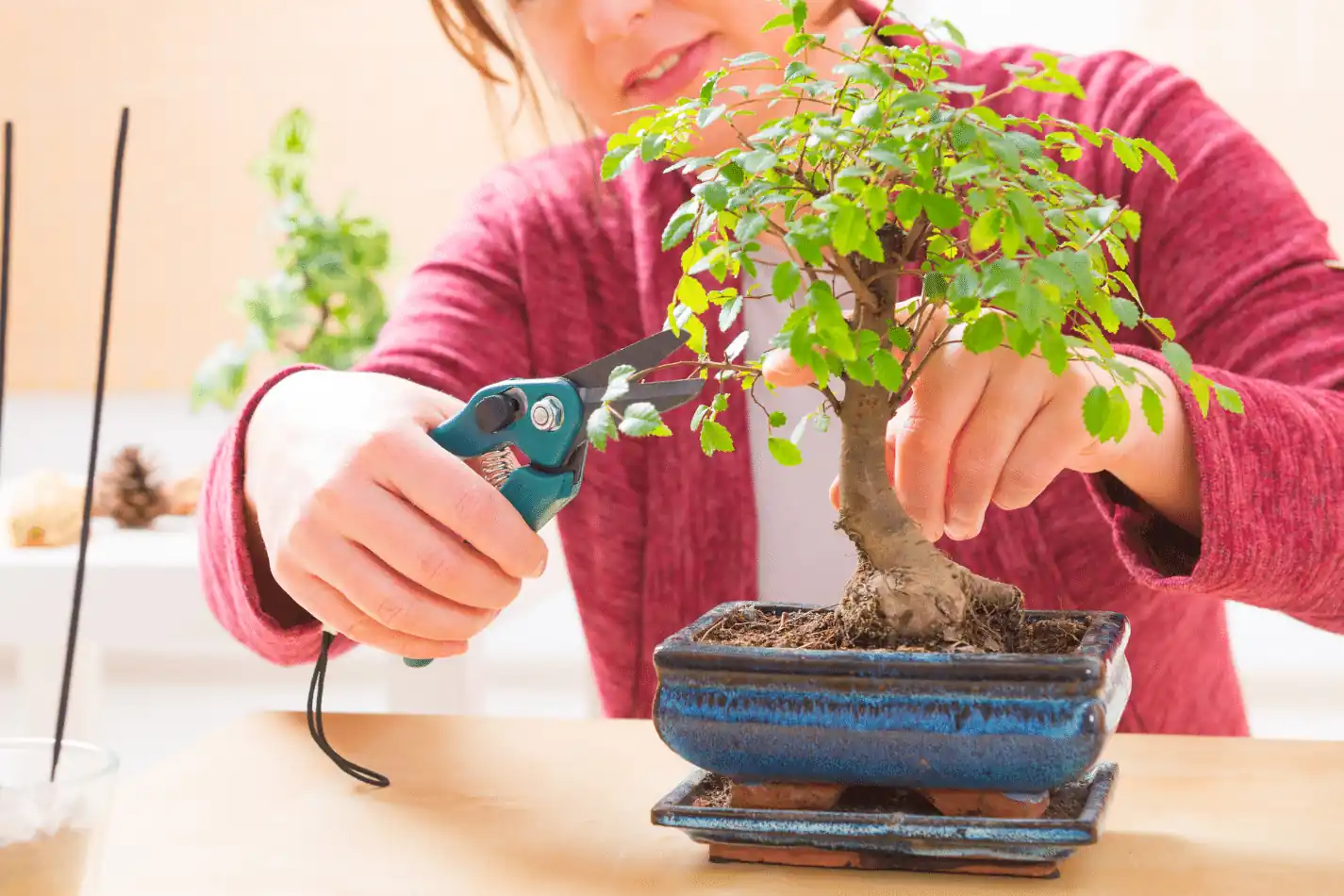Even as a beginner to bonsai, you probably know that a bonsai tree needs a lot of care to maintain its beautiful shape. Scheduled pruning is one of these things.
As a beginner to bonsai, it might be quite daunting to figure out how to prune a tree and the right time to do so. Thankfully, pruning a bonsai is not that troublesome once you know a few key elements.
You need to gather some pruning tools and shape your bonsai tree the way you want it. Make sure not to over prune, and always prune and trim your bonsai tree before and after the growing season. That way, they can recover quickly and not be at risk of dying.
That sounds easy enough, but you still need to know how to cut and trim your bonsai tree based on how you want it to grow. There are also different types of pruning techniques that serve various purposes.
So, if you were wondering, how do you prune a bonsai tree for beginners, you’re at the right place.

How to Prune A Bonsai for the First Time?
One of the questions I see asked by beginners in bonsai communities is how do you trim a bonsai tree for the first time? Beginners often ask questions like these, especially those who are brand new to the world of bonsai.
As with any novelty, they tend to think that a tree probably needs special care during the first pruning session.
Sorry to say, but you don’t need to do anything special for the first pruning session. In my opinion, the only thing a beginner needs to watch out for is over-pruning.

Most of the time, you don’t have to prune young trees too much to give them the desired shape. You only need to do light pruning to remove the dead branches, leaves, and twigs.
The type of pruning I mentioned just now is called maintenance pruning. There is also Structural/stylistic pruning. Let me give you a brief rundown of the two kinds of pruning.
Maintenance Pruning
This is the most fundamental sort of pruning, and you can easily do it as a total beginner. Maintenance pruning is not for altering the shape of the tree. Instead, it acts as a support for the tree’s natural growth.
Do maintenance pruning more often than stylistic pruning. Every time you see your tree develop unruly branches or weeds growing on your pot, you need to prune them out.
Also, remove branches that tend to grow downwards. They will eventually touch the dirt or grow outside the pot making your bonsai tree look shabby and unkempt.
After that, you need to pluck out the dead branches if there are any. Also, remove the twigs that are growing over each other. Many beginners tend not to notice, but a beautiful bonsai does not have any branches that touch grow over each other.
We don’t remove those branches for purely aesthetic reasons either. If you let them grow out, they will eventually grind on each other and damage themselves. So, it’s better for the tree if you remove them altogether.
During a maintenance pruning, you should also remove any weeds from your pot. It’s also a good idea to apply fertilizer and water afterward so that the bonsai tree can recover from the pruning session.
Structural/Stylistic Pruning
Structural pruning is not something you would do regularly. It is a slightly more advanced form of pruning that we use to shape the tree into whichever form we like.
As a beginner, you should start by doing regular maintenance pruning. As time goes by and you get a better handle on things, you can move on to structural pruning.
You need to be aware of the growth periods of your bonsai tree. Always keep them in mind before you do any major pruning sessions. Don’t forget to water your plant regularly if you keep it in a pot.
When Should You Prune A Bonsai Tree?
A lot of beginners don’t realize how sensitive trees can be. I’m not talking about only the bonsai trees. All trees have inherent sensitivity to touch and other external stimulants.
They feel agitated every time something touches or prevents their natural growth and movement.
That’s why you should not prune trees too frequently or do a lot of pruning at the same time. That makes the bonsai tree grow as naturally as possible. That is why choosing the right time to prune is paramount to the growth of your tree.
You need to know about the yearly growth cycle of trees before you can choose the right time for pruning your bonsai tree. Most trees have their growth period around spring.
They stay dormant during harsh seasons such as winter and high summer. I advise people to avoid doing any major trimming or pruning during these dormant seasons.
So, when should a bonsai tree be pruned? The answer is late winter or right before the start of spring. The middle of winter or summer is not an optimal time for pruning bonsai.
The perfect time for pruning is about a week before spring starts. That’s because your tree can handle heavy pruning much better if you do it right as it hits the growth period.
Pruning is not only about the branches and leaves. You need to be conscious about the roots too. If you see roots coming out of the pot, you need to trim those out. Eventually, you would need to re-pot the whole plant.
Doing it right before spring starts is the best possible option, as your tree will recover much faster during spring. Most of the time, you would need to place the plant in a larger pot.
How to Prune Your Bonsai into Shape?
Maintenance pruning is easy because it only deals with removing unwanted parts. Structure or style pruning is different, and you need to consider several things before doing it.
As I mentioned before, the best time to do this sort of pruning is right at the start of the growing season. Doing it any other way will make it hard for the tree to recover.
A bonsai tree should usually have a dominant base and top. The trunk should start thick and start to thin out as it goes up. There should not be any branches near the root of the tree.
The canopy of a bonsai should be evenly spread. That is the structure you should try to imitate with most bonsai trees.
When you are pruning for the structure, you need to remove a lot of things. Here’s a list of things that hinder the beauty of a bonsai tree:
Low Hanging Branches
These are the branches that start high up at the trunk. They then dip down so low that they nearly touch the ground. It makes the tree look burdened and lifeless. It isn’t a problem in the early stages. But as the tree ages, it starts to look progressively dull.
You can cut these off at the base, but these branches tend to be quite large. Removing large branches like these will leave unsightly scars on your bonsai, though you can mitigate that by using some tools.
Alternately, you can wrap an aluminum wire over the branch and bend it upwards, usually in a shape that complements the whole tree.
This method will not cause any scarring and make your tree look better. However, some branches are too far gone to be saved by this method.
Dead Branches, Twisted Branches
You should remove dead branches and leaves. They look unsightly and are a burden on the tree. Twisted branches that have deformed structures are also something that you should prune out.
Deformed or twisted branches look out of place on a well-kept bonsai. They also cause the nearby branches to twist with them if you leave them on your tree for too long. You can prune them out with tools or even pluck them by hand.
Sometimes it is better to pluck them out by hand rather than cutting them with a blade. Blades often leave behind scars that take a long time to heal, but hand-plucked wounds heal much faster.
If the branches are too thick, you have to use a tool because trying to twist it by hand could damage other parts of the tree.
Suckers
After removing dead and deformed branches, you need to deal with suckers. Suckers are tiny twigs that start growing right from the base and all over the trunk. They usually do not develop into full branches and look like little parasites on your bonsai tree.
One of the first things you should do during a stylistic pruning is to remove these suckers. That will give your bonsai more room for growth, and it will look cleaner and more dignified.
Parallel Branches
Parallel branches might sound ok while you’re reading this, but they look very odd on a real bonsai. You want your bonsai to have evenly spread out branches of different layers, sizes, and heights.
Parallel branches that grow evenly side by side usually leave empty spaces on one side and too much canopy on the other. Depending on how many of them you have, you can either remove both parallel branches or a single one. Choose based on the sort of structure you’re trying to get.
Overly Thick Branches
The ideal structure of a bonsai involves a thick base and branches and sub-branches that gradually become thinner. You need to remove any that goes outside this structure.
Sometimes you will find branches at the top that are almost as thick as the trunk of your tree. There are odd branches that might be thin at the base but gradually gains more girth as it extends.
These are the types of them that you need to prune for a healthy and structured bonsai.
Branches With Similar Height
Usually, branches tend to grow slightly over or below the starting point of another one. There are exceptions to that, and sometimes you will see them start growing from the same height as another.
When two branches grow from the same height, the tree starts to look more like an umbrella, and that is something you do not want.
Usually, it is better to cut one of the branches out completely. On the other hand, if you think you can salvage it, you can wire one of them to bend higher than the other.
Up or Inbound Branches
Sometimes, you will find sub-branches on your bonsai that are going the wrong way. Instead of spreading outwards, they tend to either move inward toward the trunk. Sometimes they grow vertically upward, sticking out like a thorn.
They don’t pose any harm to your tree, but branches like that tend to be quite unsightly. Thus, it’s a good idea to remove these early. If you get rid of them early, you won’t have to deal with a scar later on.
Crossed Branches
Crossed branches directly have an impact in harming a bonsai tree’s growth. These are branches that intersect each other. They continuously grind on each other, causing calluses to develop in the adjoined area.
Sometimes it can even make one branch grow in an unusual direction. It is best to remove it as soon as possible.
Soots
Some trees, such as Ficus, will have long hanging soots. They add to the aesthetics but having too many of them hanging around might feel a bit overwhelming. You should remove access soots while pruning this sort of species with a twig shear.
How to Prune Bonsai Tree Leaves?
Leaf pruning is the simplest form of pruning, and it takes the least number of tools to perform. Leaf pruning makes the tree get better sunlight and provides better overall ventilation. That, in turn, makes the bonsai tree grow much faster.
Another reason why leaf pruning is essential is infestations. Bonsai trees can get infected with diseases and pests, just like any other tree. Removing infected leaves is a reliable way of keeping a tree healthy.
Most deciduous trees have a very high leaf regeneration rate, so it is easy for them to recover from excessive leaf pruning.
Leaf pruning is simple because all you need to do is cut them off from the stem with scissors. You can use your hands to do it too. The tricky bit is knowing when to prune and what goals you’re trying to achieve.
As you can guess, if you randomly remove leaves, your tree will look like a shaved chicken. So, before you start pruning, research how your tree should look at its age and try to keep it in roughly the same shape.
Cutting off too many leaves will result in lower sunlight absorption. It can seriously staunch the growth of your tree, so be sure to avoid it.
If you end up over-pruning the leaves, place your plant in sunlight. Make sure that it is bright but not too direct. Reduce the amount of water and fertilizer until new buddings start to form.
Before then, the plant cannot process the excess water and fertilizer. It will do more harm than good.
How to Prune Bonsai Tree Trunk?
One of the most important aspects of a bonsai tree is the majestic trunk. As you may have noticed, when it is well-developed, it gives a bonsai tree that wise aura that makes it look older.
As a beginner, you would probably be disappointed to know that bonsai tree trunks do not grow into that shape naturally. Prune it regularly for a long time to achieve that effect.
The ideal shape you want on a standard bonsai is the flared root system that looks evenly spread out over the pot. The trunk needs to be thicker at the bottom and gradually thin out as it goes up.
If you neglect to prune your bonsai trunk, you can end up with an inverse tapper- where it is thin near the roots and thicker near the center.
Inverse tappers are unsightly as it makes your tree look out of balance. If you want to know how to prune your trunk, you need to know how trunks grow and what purpose they serve.
Otherwise, you can never get the desired shape or style. Other than that, what you’re looking for in a good trunk are these:
- Evenly spread root system
- Consistent trunk thickness slowly thinning out as it goes up
- No inverse taper or unevenly thick trunk
- Trunk always thicker than branches
Tree trunks support the weight of the tree and they transport nutrients. You can usually manipulate a bonsai tree’s growth and size by manipulating these factors.
However, in bonsai you want to keep the trees small and compact, this clashes directly with the purpose of a trunk. They only grow thicker based on how tall the tree is, and the bigger the tree the more nutrients it transports.
So, bonsai trees will not have naturally thick and even trunks. That is why there are a few artificial ways you can prune them and get the desired thickness. Let me explain how they work and what the differences are between them.
Grow and Cut
The fastest and most consistent method of getting a perfect trunk for your bonsai is the Grow and cut system. The theory behind it is simple, you let the tree grow for a while and then prune it down to a stump size and let it grow again.
When you remove the big stump, all the nutrients in the roots will focus on growing a new and stronger trunk. For this to work, you need to have the initial trunk grow slightly bent. And try to have a few other branches that are facing the top.
Once you cut the bent trunk, the roots will transfer all the energy to the straight branch. That branch will eventually develop into a new trunk.
An important point to note is that you cannot do this in a pot. Pots restrict the roots from growing, and there is a noticeable limitation of nutrients in there.
That is why you need to plant the tree outside. Let it grow for a few years naturally. After that, prune the big trunk right before the winter.
You can usually tell if your tree is ready when the size of the trunk is around two-thirds of the desired thickness. You can now prune the roots and put your tree in a pot like a proper bonsai.
This is the method of getting a consistent trunk in the shortest time possible. It does, however, have a few flaws. The most prominent flaw of this method is that the place where the first cut is made will have a significantly large scar. These scars may go away in a few years, or it may stay permanently.
If the tree did not have a suitable vertical branch, then the new trunk will be slightly bent, and there’s nothing you can do to change that.
If you don’t leave any live branches and leaves on the tree, or if you prune it like this in the winter, the tree might end up dying. Although the chances of that happening are quite low.
Branch Sacrifice
Sacrificing two side branches is similar to the previous fundamentally, but the process is different. You prune the tree in a way that only leaves two side branches with lots of leaves. Then you have to cut the main trunk right where those branches start
It may seem like we are sacrificing the trunk for the two branches but it’s the other way around.
If you keep growing the side branches for a few years, the trunk will eventually start to spread out and thicken, without being overly tall.
Once your trunk is thick enough, you can go ahead and prune those branches and cut them off completely.
The trunk will now develop naturally and you can maintain the shape as you want over the next few years.
This method leaves scars that do not heal, but the scars are on locations that look normal for a grown tree. So it ends up making it look more beautiful.
Trunk Merging
The third option is the trunk merging. This method makes your tree trunk look thick and luscious, but it isn’t going to thicken the individual trunks.
Trunk merging does exactly as the name suggests. It merges a bunch of trunks to make them look like one big whole.
It is the fastest method for having a tree with a thick trunk, as you do not have to wait for the tree to grow for years.
However, you would need to prune the canopy a lot. They are a lot of trees fused into one. That is why they produce more branches and leaves.
It might be a challenge for people who are new to bonsai. If you can’t grow a good trunk outside, then this is the best choice you have.
How to Split A Branch/Trunk While Pruning?
Cutting out unwanted parts of a bonsai is not the only pruning you can do to give it the shape you want. You can wire a branch to permanently bend it in a certain way. Alternately, you can use that wire to make it grow in a different direction.
Sadly, some branches may be too thick to bend, and if you push too hard, they may break. In cases like these, you can use a splitting tool to split them apart.
Make sure that the split happens on a vertical line. You are creating two layers of a single branch. That makes it more flexible and bendable.
This method is like making plywood. Plywood with a lot of layers is very sturdy and inflexible. But a single layer of plywood is almost like paper. Splitting works the same way as those layers.
Don’t worry about the branch dying out, if you do it right, it does not affect the nutrition flow of the branch and it stays perfectly healthy.
How to Choose the Right Pruning Tools?
The most basic set of tools you need is a scissor for pruning leaves, a concave cutter for cutting branches. You also need a set of wire cutters for removing the wires you would usually put on a bonsai.
Other than that, you should also have a separate set of shears for pruning the roots. Roots have water and dirt around them, so using your primary set of sears can cause rust. Root shears need to be stronger than your standard leaf shears.
If you need to split your tree trunk or a thick branch, you need a branch splitter. You should also keep a pair of pliers if you plan on using wires often. Many people think they are unnecessary, but I find it easier to tie up wire ends with pliers.
Final Thoughts on How do you Prune a Bonsai Tree for Beginners
For anyone looking to start the art of bonsai pruning will become a solid part of your management and growth plan. Getting high quality tools and learning how and when to manage your tree will yield amazing results!
If you are just learning about bonsai trees and looking to purchase high quality trees that will likely live longer than you then I would highly suggest checking out Bonsai Boy Trees as they are a long lasting New York business that provides trees for all price ranges!







